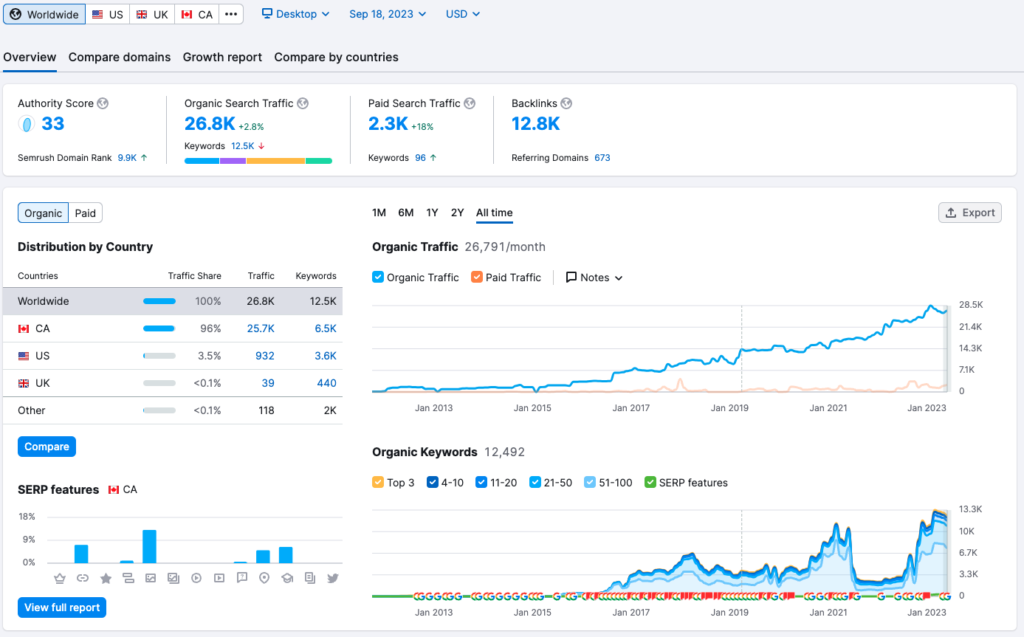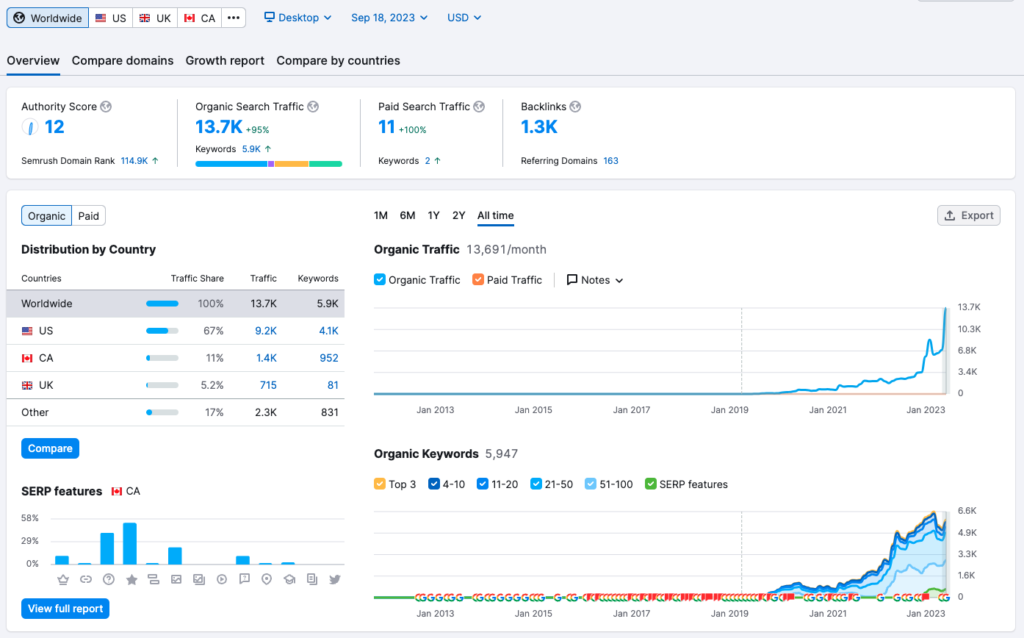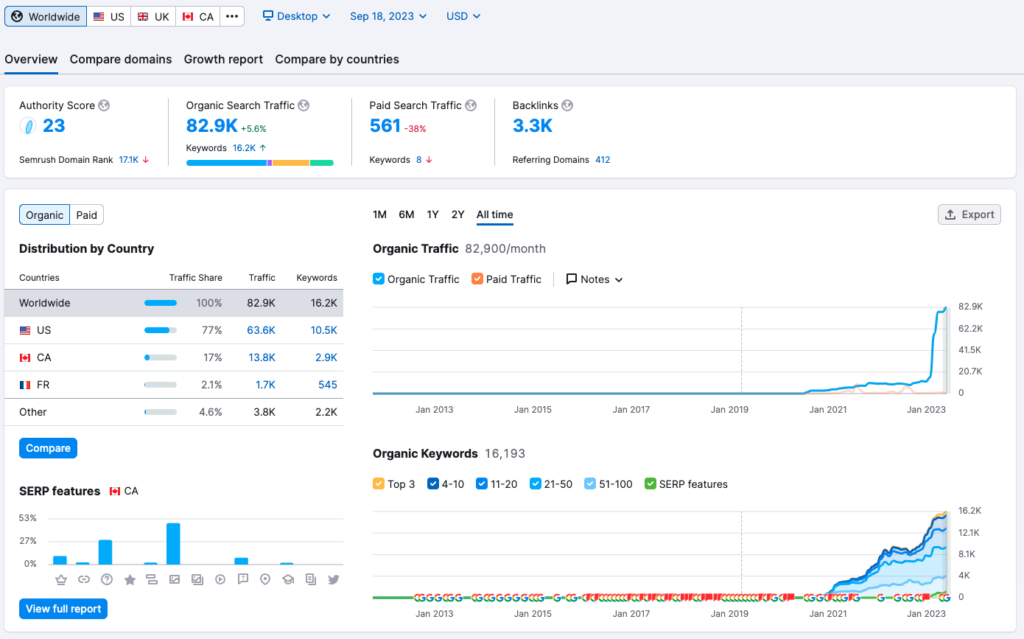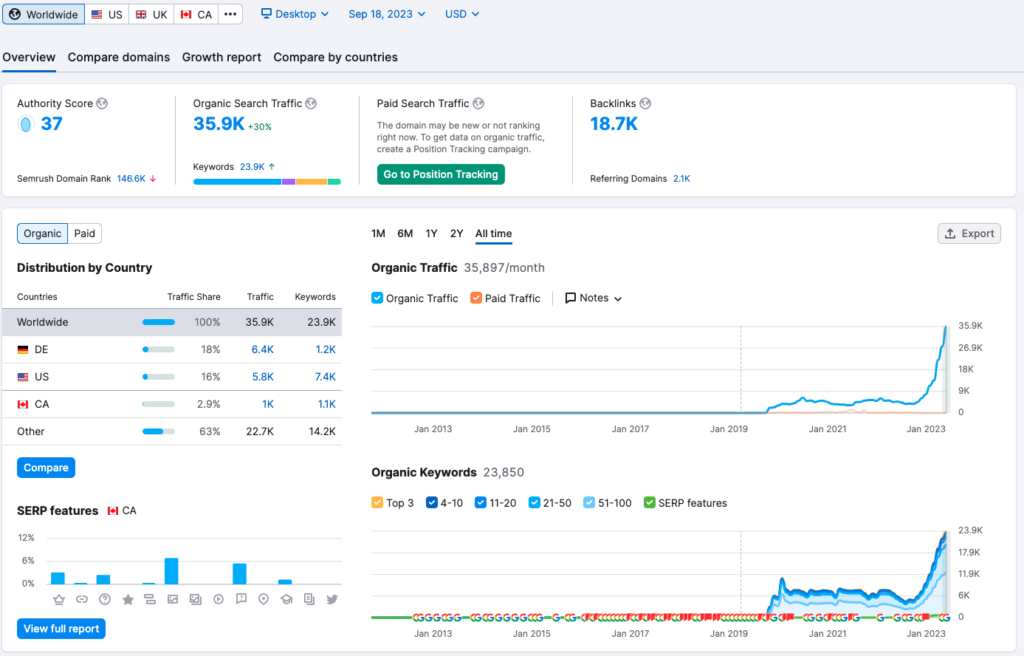- Eric St-Cyr
- Last Update Date
- Oct 01/23
What is Shopify SEO?
Shopify SEO is the practice of optimizing a Shopify store to improve its visibility in search engine results. Key Shopify SEO techniques include optimizing product titles, descriptions, image alt texts, and URLs. By improving site speed, creating high-quality content, and building backlinks, Shopify SEO helps increase organic traffic to a Shopify store.
Maximize Your Shopify Success with ProStar SEO
Unleashing the full power of Shopify SEO is not just an option, it's a necessity in todays competitve world.
Request a free SEO audit of your website
Skyrocket Your Organic Search Traffic on Shopify
Leverage our proven Shopify SEO strategies and watch your digital presence soar. In a dynamic eCommerce landscape transformed by recent events and evolving tech, it’s crucial to stand out.
ECommerce exploded as the go-to platform amidst global changes. Now, more than ever, businesses seeking online dominance must grasp the intricate mechanics of sustaining a robust online presence. And nothing says ‘returning customer’ louder than an optimized Shopify store.
Claim Your FREE Shopify SEO Audit!

Navigating Shopify SEO can be daunting. It's a bustling eCommerce hub with countless businesses vying for attention. Our distinct Scientific SEO methodology consistently delivers, even when the stakes are the highest.

Why Shopify SEO is Non-Negotiable Nowadays

Unpacking SEO
At its core, SEO is your digital megaphone. It fine-tunes your site to be search engine-friendly, primarily for giants like Google.

Why Your Shopify Store Craves SEO
With countless Shopify stores out there, your exceptional products and snazzy name might not suffice. You need that extra edge. Elevate your Shopify store's visibility, ensuring search algorithms spotlight your brand consistently. While generic SEO tactics might yield some fruit, Shopify demands an expert touch. At ProStar SEO, we're that expert touch, meticulously aligning our strategies with your unique eCommerce requirements.
Claim Your FREE Shopify SEO Audit!



The Best Online Shopify SEO Services
Real Shopify store results




Why Choose ProStar for Your Shopify SEO Needs?


Tailored Shopify SEO Solutions
Every client has a unique voice. We craft bespoke strategies, guiding you every step of the way.


No Lengthy Shopify SEO Contracts
We're so confident in our delivery, we let our results do the talking. Feel free to move on with just 30 days' notice.


Affordable Shopify SEO Packages
Quality doesn't always mean costly. Whether you're a startup or an enterprise, we've got you covered.


Data-Driven Scientific SEO
We blend tried-and-true eCommerce SEO tactics with innovative methods, guaranteeing tangible outcomes.
Shopify SEO Audit for Your Online Store
Competitors Audit
Dive deep into the competition surrounding your Shopify store. By examining the strategies of direct competitors, we unlock critical insights into their strengths and potential vulnerabilities. All our SEO campaigns harness data-driven techniques, ensuring that we fast-track improvements in your online visibility. Rely on us for organic, algorithm-centric strategies that bring about swift enhancements in your online standing.
Shopify Keywords Audit
Our toolkit is vast, and with it, we pinpoint the most relevant keywords tailored to your store’s offerings. Special emphasis is placed on Long-Tail Keywords, which have been proven to significantly influence a website’s search rankings and monthly search volume.
Detailed SEO Features
Explore our comprehensive suite of SEO utilities, from intricate reporting to meta analyses. Let’s collaborate to elevate your Shopify store’s online presence
Master the World of Shopify SEO
Dive deep into the world of Shopify SEO. From beginner-friendly checklists to comprehensive guides, we’ve got you covered. Whether you’re an established online business or just starting out, optimizing your Shopify store is paramount.

Why Focus on Shopify SEO?

Surge in Store Traffic :
Drive qualified traffic using the latest SEO strategies. Remember, more traffic often means more conversions!

Harness the Power of Keywords :
Beyond just primary terms, delve into related keywords, off-page SEO, and more to truly amplify your visibility.

Specialized Solutions for Shopify :
Tailored advice for Shopify store owners, ensuring you sidestep common SEO pitfalls.



Elevate Your Shopify Game with Us
🚀 Customized SEO Plans: Our offerings are not one-size-fits-all. We craft, tweak, and tailor solutions, ensuring that your web pages not only rank higher but also attract the right audience.
🔗 Strategic Link Building: With a dedicated in-house team, we focus on Shopify-centric link-building strategies, fortifying your site’s authority and enhancing its visibility.
🧠 Technical SEO Mastery: In the world of online commerce, technical prowess is non-negotiable. Our Shopify SEO maestros ensure your site aligns with search engine best practices, promising a stellar user experience.
🔍 Keyword Optimization: Leveraging keyword density effectively can skyrocket your on-page SEO. Our goal? Infuse your site with a meticulously curated keyword list, propelling its search engine ranking.
📊 Transparent Reporting: Stay in the loop with our monthly reports. Track our endeavors, gauge our success, and guide our next steps.
✍️ Engaging Blog Content: Boost organic traffic with insightful blog posts. Our wordsmiths craft compelling articles, each resonating with your brand’s essence and ethos.
Still thirsty for more SEO knowledge?
Why is Shopify the eCommerce Titan?
Shopify isn’t just another platform; it’s an eCommerce powerhouse. Here’s a snapshot of its unparalleled reach:
- Holds the bronze as the 3rd largest online retailer in the U.S., trailing only giants like Amazon and eBay.
- Powers over 1 million thriving businesses and continues to grow.
- Marks its presence in 170+ countries across the globe.
- Celebrates a whopping 200+ million purchases in just the past year.
SEO Guide - The importance of Shopify SEO
In a sea of over a million Shopify stores, how do you ensure yours shines the brightest? Enter, Shopify SEO. Our bespoke SEO strategies prioritize organic results. So when shoppers search, they find you first. And here’s the cherry on top: enjoy a surge in traffic without the hefty price tag of Google ads.
What is Shopify SEO?
Shopify SEO encompasses specific Search Engine Optimization techniques tailored for the Shopify platform, making it distinct from other ecommerce platforms. To guide you through this, consider this as a mini SEO guide for Shopify.
There are noteworthy SEO features integrated into Shopify. One of the significant features is the option to create a blog for your store. Leveraging this by crafting original content related to your individual product names not only drives organic traffic but can effectively redirect readers to your product pages, thus enhancing the conversion rate.
Another aspect of Shopify SEO that warrants attention is the ease of setting up redirects on your site. Such internal links not only provide a cohesive customer journey through your product listings, but they also boost search visibility by ensuring potential customers can seamlessly navigate to products or information they’re interested in.
However, like many ecommerce platforms, Shopify isn’t devoid of challenges. Duplicate content issues, especially prevalent in product categories with similar items, can hinder your SEO efforts. But fear not! Later in this piece of content, we’ll delve into strategies to mitigate such challenges.
SEO Guide - Key SEO Elements for Shopify Websites
Tips for enhancing the user experience:
- Homepage > Category page > Product page: Products are a mere 2 clicks away.
- Homepage > Category page > Sub-category > Product page: Ensuring even your product variants are no more than 3 clicks away.
Moreover, don’t overlook essentials: a contact page and an about page. They’re crucial for building trust and expertise with users and search engines. Another pivotal element? A search bar. While it might not directly influence Google Analytics metrics, it undoubtedly streamlines the customer journey. Shopify offers an inbuilt search bar – an easy means to bolster user experience and cater to specific search queries.
Deep Dive into Technical SEO for Shopify
Indexing and Crawling:
Think of it as search engines getting acquainted with your website. It’s their way of understanding your content and deciding where it ranks. Kickstart this process by registering your domain with Google Search Console and other SEO tools like Bing Webmaster tools. These tools are invaluable in tracking the fruits of your SEO campaign.
For Shopify users, there’s good news. The platform auto-generates sitemaps for you, categorizing them into types like products, pages, collections, and blogs. You can easily submit these to Google Search Console and Bing Webmaster tools.
However, some technical aspects of SEO on Shopify might feel restrictive, like the inability to modify the Robot.txt files. But, by employing meta robots tags in your site’s template, you can guide search engines on what to index. This workaround, while not perfect, can help in addressing duplicate content issues and preventing keyword stuffing.
Redirects:
Shopify’s ease in setting up redirects is a boon for addressing broken links and integrating outdated content. Keeping your content updated and eliminating expired URLs or links ensures search engines and users perceive your brand as up-to-date, reflecting your ecommerce SEO expertise.
Remember, every facet of your Shopify store, from title tags to secondary keywords, influences its SEO efforts. With the right approach, supported by tools like Google Analytics, you can enhance search intent alignment, address Core Web Vitals, and even explore advanced strategies like guest posting and tracking unlinked mentions for comprehensive domain authority building.
More About Shopify SEO
In the ever-evolving world of e-commerce, having a well-optimized Shopify store is crucial for attracting potential customers and achieving success.
Store owners employ various Shopify SEO techniques to ensure their online store ranks prominently in search engine results.
One of the first steps in the Shopify SEO journey is conducting comprehensive keyword research. Store owners delve deep into the world of relevant keywords, analyzing search engines’ preferences and trends.
Armed with this data, they strategically incorporate these keywords into their product pages, category pages, and collection pages. These keywords are strategically placed within title tags and meta descriptions, helping improve their visibility in search results.
Duplicate content is a common concern for online stores, but Shopify provides robust solutions.
Store owners pay close attention to product descriptions, ensuring that each one is unique and engaging. They also utilize canonical tags to indicate the preferred version of a page, effectively eliminating duplicate content issues.
To enhance user experience, store owners work on optimizing their site structure.
They create a seamless navigation system, making it easy for visitors to explore their products. Internal linking is used to connect related pages and provide a better user experience. Additionally, they prioritize page speed, knowing that faster loading times contribute to higher rankings.
In the world of SEO, content is king. Store owners regularly publish informative blog posts, covering topics relevant to their industry and products.
These blog posts not only engage potential customers but also serve as a valuable source of organic traffic. Social media promotion plays a pivotal role in driving traffic and boosting the online store’s visibility. Sharing blog posts and product updates across various social media platforms ensures a wider reach.
The Shopify platform offers a plethora of tools and apps in the Shopify App Store to aid store owners in their SEO journey. Apps like the Yoast SEO app provide valuable insights and recommendations for improving SEO. Google Analytics is integrated to monitor site performance, while Google Search Console helps in identifying and addressing any SEO issues.
Robots.txt files are meticulously configured to control search engine crawlers’ access to specific pages. Store owners also create and maintain sitemap.xml files to assist search engines in understanding the site’s structure and content.
On the product front, store owners focus on creating enticing product descriptions, ensuring they stand out in the competitive e-commerce landscape. Alt text for images is optimized to improve image search rankings. They also experiment with product variants and combinations to increase the average order value.
Link building is another critical aspect of Shopify SEO. Store owners build both internal and external links to establish their online store’s authority. External links from reputable sources signal to search engines that the store is a trusted source of information and products.
In the Shopify SEO journey, every page counts. Store owners pay special attention to the home page and other important pages, optimizing them with the right keywords and content. Title tags are meticulously crafted to grab users’ attention and improve click-through rates.
Major algorithm updates from Google are closely monitored. Store owners adapt their SEO strategies to align with these updates, ensuring their store continues to rank well. They also participate in SEO events and stay updated with top predictions in the industry.
In summary, Shopify SEO is a multifaceted approach that requires continuous effort and adaptation. Store owners can explore a wide range of Shopify SEO services and tools available in the Shopify App Store. By staying focused on technical SEO, content marketing, and user experience, they can drive organic traffic, attract potential customers, and secure top positions in search engine rankings.
